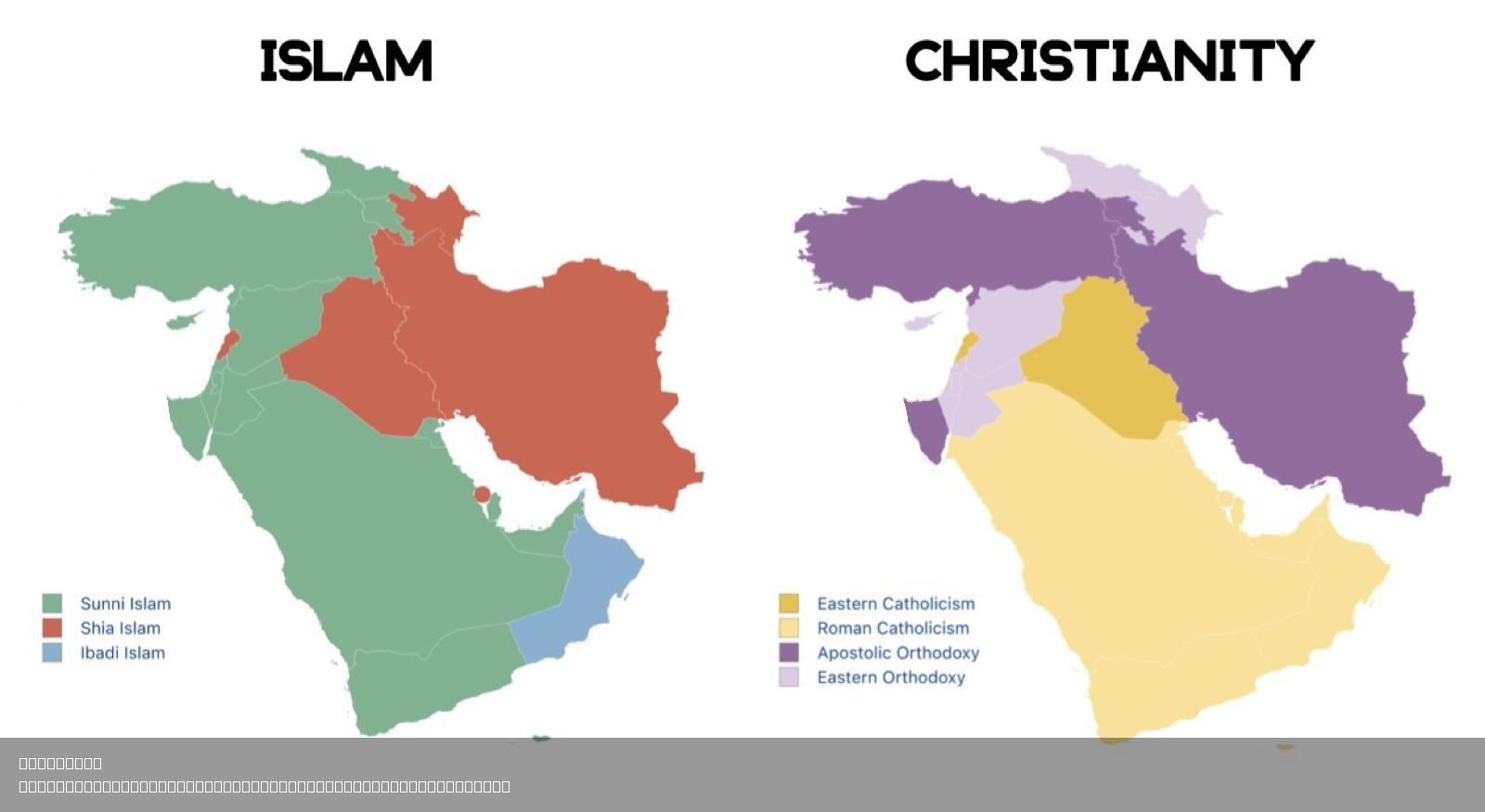Largest Sect of Islam and Christianity in West Asia Map


Alex Cartwright
Senior Cartographer & GIS Specialist
Alex Cartwright is a renowned cartographer and geographic information systems specialist with over 15 years of experience in spatial analysis and data...
Geographic Analysis
What This Map Shows
This map provides a visual representation of the largest sects of Islam and Christianity in West Asia, highlighting the demographic distribution of these two major religions within the region. West Asia, which includes countries like Saudi Arabia, Iran, Iraq, Turkey, and Israel, serves as a significant cultural and religious crossroads. The map delineates areas where Sunni and Shia Islam, as well as various denominations of Christianity, dominate. It’s crucial to understand these religious divisions as they play a vital role in the social, political, and cultural dynamics of the region.
Deep Dive into Islam and Christianity in West Asia
Islam is the predominant religion in West Asia, with over 90% of the population identifying as Muslim. The two main sects of Islam are Sunni and Shia, which have distinct beliefs and practices. Sunni Muslims make up approximately 87-90% of the global Muslim population, whereas Shia Muslims constitute about 10-13%. In West Asia, the distribution is particularly pronounced; for example, Iran is predominantly Shia, while countries like Saudi Arabia are largely Sunni. This sectarian divide has historical roots, dating back to the early years of Islam, and continues to influence geopolitics today.
Interestingly, have you ever wondered how these divisions affect daily life and governance? In many instances, sectarian identity shapes political affiliations and social interactions, often leading to tensions and conflicts. In Iraq, for example, the Sunni-Shia divide has been a significant factor in the nation’s political landscape since the fall of Saddam Hussein, with various groups vying for power and influence.
Christianity, while a minority religion in the region, is also significant, with various denominations present. The largest populations of Christians in West Asia are found in Lebanon, where Maronite Catholics and Greek Orthodox Christians hold substantial numbers, and in Palestine and Israel, where both Orthodox and Catholic communities exist. The Christian population in these areas has been declining due to emigration and conflict, raising concerns about the future of Christian communities in the region.
The complex interplay between these religious groups leads to a rich tapestry of cultural practices, festivals, and traditions. For instance, the celebration of Eid al-Fitr among Muslims and Christmas among Christians provides insight into the shared public life in West Asia, even amidst differing beliefs. However, the rise of sectarian violence and the ongoing conflicts in Syria and Iraq pose threats to this coexistence, leading to a challenging environment for both communities.
Regional Analysis
When analyzing the map, we can observe clear regional variations in the sects of Islam and Christianity. In Saudi Arabia, the Sunni population is overwhelmingly dominant, as the country is the birthplace of Islam and home to its holiest sites. Conversely, Iran's Shia majority presents a contrasting landscape, shaped by a theocratic regime that emphasizes Shia Islam in its governance and societal norms.
In Iraq, the sectarian makeup is more complex. The north is predominantly Sunni, particularly in regions like Anbar, while the south sees a majority of Shia Muslims. The central areas, including Baghdad, reflect a mix of both sects, often leading to sectarian strife and competition for political control.
Lebanon offers a unique case where religious diversity is constitutionally recognized, leading to a delicate balance of power among different sects. The Christian population, which once constituted a majority, now faces challenges from both rising Muslim populations and internal divisions. This demographic shift has significant implications for Lebanon's social fabric and political stability.
Significance and Impact
Understanding the largest sects of Islam and Christianity in West Asia is essential for grasping the region's socio-political dynamics. The sectarian divisions not only influence local governance and community relations but also have broader implications for international relations and security. For instance, the rivalry between Shia-majority Iran and Sunni-majority Saudi Arabia has reverberated across the region, impacting conflicts in Syria, Yemen, and beyond.
Looking ahead, the future of religious demographics in West Asia is uncertain. Ongoing conflicts, coupled with socioeconomic factors, may continue to alter the religious landscape. The emigration of Christians from the region has raised alarms about the potential loss of cultural heritage and diversity. Moreover, as younger generations become more interconnected through globalization, traditional sectarian identities may evolve, leading to new forms of social cohesion or conflict.
In conclusion, the map of the largest sect of Islam and Christianity in West Asia not only highlights geographical distributions but also serves as a reflection of the intricate relationships between faith, culture, and politics in this vital region of the world. By understanding these dynamics, we can better appreciate the challenges and opportunities that lie ahead for both communities.
Visualization Details
- Published
- August 6, 2025
- Views
- 146
Comments
Loading comments...